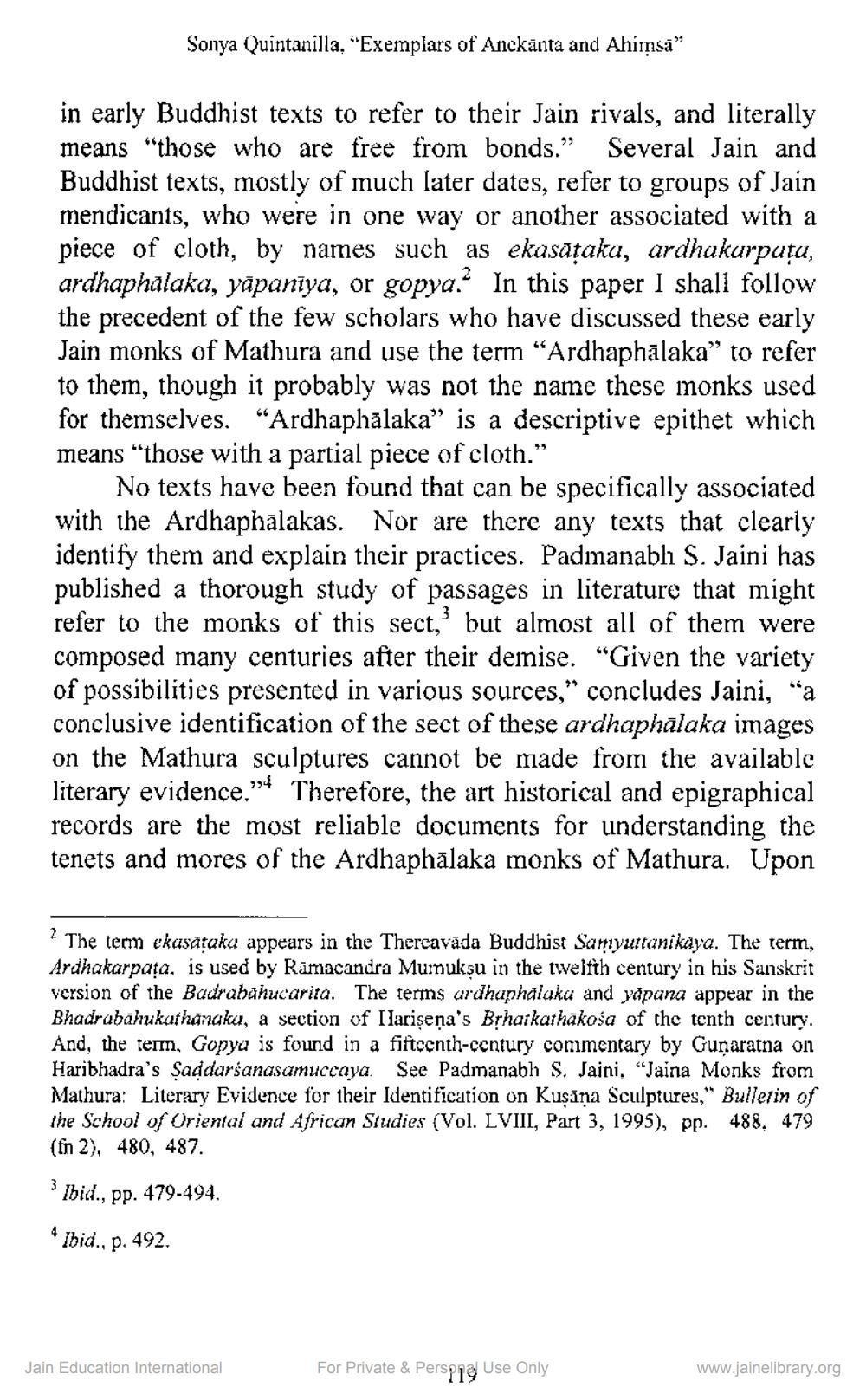________________
Sonya Quintanilla, "Exemplars of Anckanta and Ahimsā”
in early Buddhist texts to refer to their Jain rivals, and literally means "those who are free from bonds.” Several Jain and Buddhist texts, mostly of much later dates, refer to groups of Jain mendicants, who were in one way or another associated with a piece of cloth, by names such as ekasataka, ardhakurpuța, ardhaphalaka, yāpanīya, or gopya.? In this paper I shall follow the precedent of the few scholars who have discussed these early Jain monks of Mathura and use the term “Ardhaphalaka” to refer to them, though it probably was not the name these monks used for themselves. “Ardhaphālaka" is a descriptive epithet which means “those with a partial piece of cloth."
No texts have been found that can be specifically associated with the Ardhaphalakas. Nor are there any texts that clearly identify them and explain their practices. Padmanabh S. Jaini has published a thorough study of passages in literature that might refer to the monks of this sect, but almost all of them were composed many centuries after their demnise. “Given the variety of possibilities presented in various sources," concludes Jaini, "a conclusive identification of the sect of these ardhaphalaka images on the Mathura sculptures cannot be made from the available literary evidence." Therefore, the art historical and epigraphical records are the most reliable documents for understanding the tenets and mores of the Ardhaphalaka monks of Mathura. Upon
? The term ekasātaku appears in the Thercavāda Buddhist Samyurtanikaya. The term, Ardhakarpata, is used by Ramacandra Muinuksu in the twelfth century in his Sanskrit version of the Badrabahucarita. The terms ardhaphalaka and yapana appear in the Bhadrabāhukathanaka, a section of Ilarisena's Brharkathakośa of the tenth century. And, the term, Gopya is found in a fifteenth-century commentary by Gunaratna on Haribhadra's Şaddarśanasamuccaya. See Padmanabh S. Jaini. "Jaina Monks from Mathura: Literary Evidence for their Identification on Kusāna Sculptures, " Bulletin of the School of Oriental and African Studies (Vol. LVIII, Part 3, 1995), pp. 488. 479 (fn 2), 480, 487.
Ibid., pp. 479-494
* Ibid., p. 492.
Jain Education International
For Private & Perspio Use Only
www.jainelibrary.org




